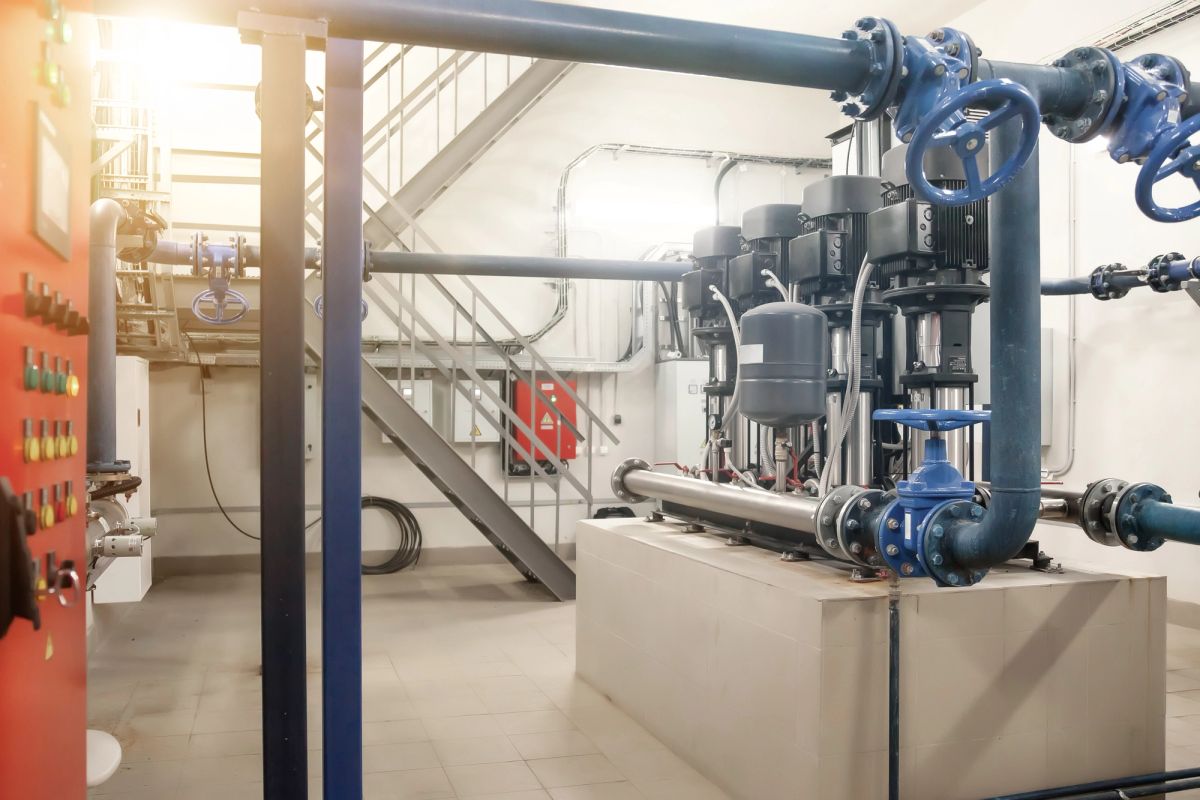Your Guide to Industrial Heat Pump Installation
An industrial heat pump is a kind of active heat-recovery equipment that raises the temperature of a waste-heat stream to a higher, more usable temperature. As a result, heat pumps may help with energy savings when traditional passive-heat recovery is not achievable. This article aims to guide you about heat pump technology and its applications in industrial processes.
1. Heat pumps save money because the heat can be recovered from waste energy
Heat pumps save money because the heat can be recovered from waste energy into useful heat energy, this heat would generally be rejected to the atmosphere, thus increasing atmospheric temperatures. A heat pump is in essence a refrigeration compressor that operates at higher pressures than a standard refrigeration compressor.
The most important consideration when selecting a heat pump is the application of the heat pump. A standard “off the shelf” heat pump very rarely is the correct application. Initially in industrial applications heat pumps would use the heat being rejected to the atmosphere by the ammonia plant, again due to the application the COP’s expected were very rarely achieved.
2. Effective COP depends on the heat pump inlet & discharge pressure required
The coefficient of performance (COP). It is defined as the energy delivered divided by the energy consumed. For example if a heat pump or refrigeration system (technically the same thing) has a COP of 5 this means that for every 1 KW of electrical energy inputted to run the heatpump it will deliver 5 KW of heat.
For traditional heating solutions, the maximum possible COP would be 1 (100%). However steam boilers are not 100% efficient in conversion of fuel energy to heat energy produced with most efficient boiler manufacturers stating efficiencies of between 0.80 and 0.90, only condensing boilers can score above 90% and they require particular configuration and systems to ensure this condensing, they will also not produce steam at 90% efficiency.
Most of the efficiencies stated are however in lab conditions and on brand new boilers and this efficiency will deteriorate through scaling, wear and ash fouling. The heat pump can have many functions which again is down to the application of the heat pump, it can provide both heating and cooling, either single stage, two stage or absorbing heat from the existing refrigeration system.
The effective COP will depend on the heat pump inlet pressure and the discharge pressure that is required to deliver the needed water temperature, but the COP is likely to range between 4 and 8 (higher is possible depending on application). If you consider that when the heat pump application provides cooling to a facility as well as generating heat/hot water the efficiency increases even further as the power input to the heat pump provides both heating and cooling.
With a COP of 6 compared with a boiler system with a COP of 0.8, the industrial heat pump provides 7.5 times more heat energy for each unit of energy input.
3. More than 5 times more efficient than a steam boiler
The above application is a standard application where some of the heat being rejected from a common ammonia system is being used as a “prime” for the heat pump. The negative of this type of application is that the electricity being used to generate heat only. However, the COP would still be around 4.5 which is still more than 5 times more efficient than a steam boiler.
The above application is a single stage industrial heat pump that uses a secondary refrigerant(glycol or similar) as the “prime” and converts the heat absorbed from the process into hot water. This application is using the motor input power to provide heating and cooling, combined COP’s are around 7 depending on the application.
4. The hot water can be used in any number of ways
The above application is a two stage application, in this application the first stage of the heat pump is providing refrigeration to the facility via a secondary refrigerant (glycol or similar). The heat being rejected via this first stage is either rejected to the atmosphere or is directly introduced into the second stage depending on whether there is a hot water requirement. The benefit of this application is that the first stage can be used to provide cooling/heat removal from a building when there is no hot water requirement, when there is a hot water requirement the second stage converts this heat directly into hot water in a very efficient manner. With this application the heat pump compressor is always “primed” with no losses and COP’s of above 11 can be achieved.
The three diagrams above are basic diagrams and the heat pumps will have additional items such as desuperheaters and subcoolers. The hot water can then be used in any number of ways within a purpose designed system to make use of the energy in many possible applications such as hot water heating (domestic & Washdown) , space heating of production areas or even within the process of preheating materials/product.
5. Sizing your industrial heat pump
Balance is crucial for an industrial heat pump. It is important that you have a consistent heat source when refrigeration is required to work. It is imperative to map the refrigeration system load against the load profile for the heating requirement.
A strong correlation between heating and cooling loads are perfect for heat pumps systems. Heat pumps will work when the load is even but not at corresponding times but this will require an element of storage for the hot water and more controls around how the system operates. It is also important to consider how load is affected by season and market. Is there more heat required in hotter months when the refrigeration system may be operating more often. Similarly if in the food industry is the product seasonal and how will this affect the operation of the heat pump.
The system should be sized correctly and a full review of the site should be undertaken and all processes should be considered for both the heating and cooling requirements.
Heat pumps can also use the ambient air as the “source of heat” but generally in northern Europe we have found efficiencies prohibitive to the capital cost and payback. They tend to be borderline as efficient as a gas fired boiler, depending on the gas price.
Conclusions
- An industrial heat pump can capture waste heat efficiently and can reduce fossil fuel use
- Ammonia heat pumps operate at a much higher coefficient of performance (COP) than traditional boilers.
- Heat pumps can generate hot water up to 90oC and possibly above safely & effectively
- Front end design is imperative for sizing and payback, all loads should be considered.
How CoolPlanet can assist you with industrial heat pumps
Are you concerned about rising gas prices and security of supply? CoolPlanetOS from CoolPlanet can effectively map your refrigeration and heating needs taking the guesswork out of heat pump design.
CoolPlanet’s industrial heat pumps can use renewable energy from the air, water or ground but also waste energy from buildings and processes to provide you with heating and cooling. They are cheaper to run than gas boilers, produce less emissions (meaning better carbon management ) and can even provide you with free hot water.





